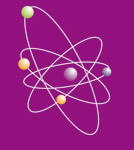ICPEAC
Central Website
ICPEAC Charter,
![]()
Home > Charter page 2
ICPEAC charter describes the organization and by-laws of ICPEAC.
Charter for the International Conference on
"Photonic, Electronic and Atomic Collisions"
| 1, 2, 3 |
3.2. Executive Committee
The Executive Committee is responsible for decisions and recommendations concerning the future of the conference. The Executive Committee recommends dates and sites of future conferences and then nominates a chairperson (or co-chairpersons) for the Local Committee to the General Committee. The Executive Committee selects the new members of the General Committee, and selects candidates from those nominated by the chairperson to fill any vacancies that may occur between conferences.
In its role as program committee, the Executive Committee shall solicit from the General Committee suggestions for invited papers, make recommendations to the Local Committee and supervise the selection of invited and contributed papers, oversee the format of the meeting and provide guidance for the Local Committee concerning such matters as registration fees.
The Executive Committee is composed of ex officio the chairperson and immediately prior chairperson, the vice chairperson, the secretary, the treasurer, and future, current, and immediately prior chairperson (or co-chairpersons) of the Local Committees and four additional members who are nominated by the vice-chairperson and elected by a majority of the General Committee. Elected members of the Executive Committee serve a two-year term. If a Local Committee has co-chairpersons, multiple participation in Executive Committee discussions is permitted, but one of the co-chairpersons must be chosen by the Local Committee to vote on its behalf.
Formal business of the Executive Committee is approved by a majority of the members present. Between scheduled meetings balloting by mail is allowed. If the Executive Committee wishes to do so, it may poll the General Committee for its views, but recommendations of the General Committee are not binding on the Executive Committee. If a majority of the Executive Committee cannot attend a scheduled meeting of the committee at which the conference program is selected, the conference chairperson, in consultation with the Local Committee chairperson (or co-chairpersons), is authorized to select substitute members in sufficient numbers to accomplish this task. During formal votes of the Executive Committee, whether at a meeting or in a mail ballot, the voting rights of each Local Committee that has co-chairpersons shall be restricted to one person, chosen in advance by that Local Committee.
Early during each conference, the Executive Committee meets to accomplish the following:
a. Formulate a recommendation to the General Committee concerning the dates and sites of future conferences and the nomination of the chairperson (or co-chairpersons) of the Local Committee;
b. Receive the nominations of the Nominating Committee and select the new members of the General Committee;
c. Conduct other business as necessary.
After the meeting, the chairperson notifies the new members of the General Committee of their election.
3.3 General Committee
The General Committee provides a representative group of conference participants. The General Committee selects the officers and membership of the Executive Committee, and the chairperson (or co-chairpersons) of the Local Committee. The General Committee approves the selection of the dates and site of the next conference. More generally, it is responsible for the overall manner in which the conference is conducted, for instructing the other committees in matters such as the subject matter and scope of the conference, and for the general style of the conference. It is also responsible for providing specific suggestions for invited papers at the conference.
The General Committee is composed of ex officio the Executive Committee and no more than forty elected members. Each elected member of the General Committee serves a four-year term. Approximately half of the elected members of the General Committee are replaced during each conference. Self-succession is discouraged, but not prohibited. New members of the General Committee are nominated by the Nominating Committee and selected by a majority of the Executive Committee.
Actions of the General Committee are taken by a majority of those eligible and voting. Between conferences, actions of the General Committee are taken by a majority of those eligible.
In the middle of each conference, the General Committee meets to accomplish the following:
a. Receive the recommendation of the Executive Committee, and select the dates and sites of future conferences, and the chairperson (or co-chairpersons) of the Local Committee.
b. Provide the Executive Committee with advice on alternative dates and sites, and guidance concerning forthcoming conferences.
c. Receive the nominations from the Nominating Committee, and select the next conference vice chairperson (who also serves as chairperson-elect), and the secretary and treasurer if the terms of these officers are expiring. The previous vice chairperson automatically succeeds to the chairpersonship unless the vice chairperson resigns, in which case the new General Committee selects a new chairperson.
d. Receive the nominations from the vice-chairperson, and select the members of the new Executive Committee who do not serve ex officio.
